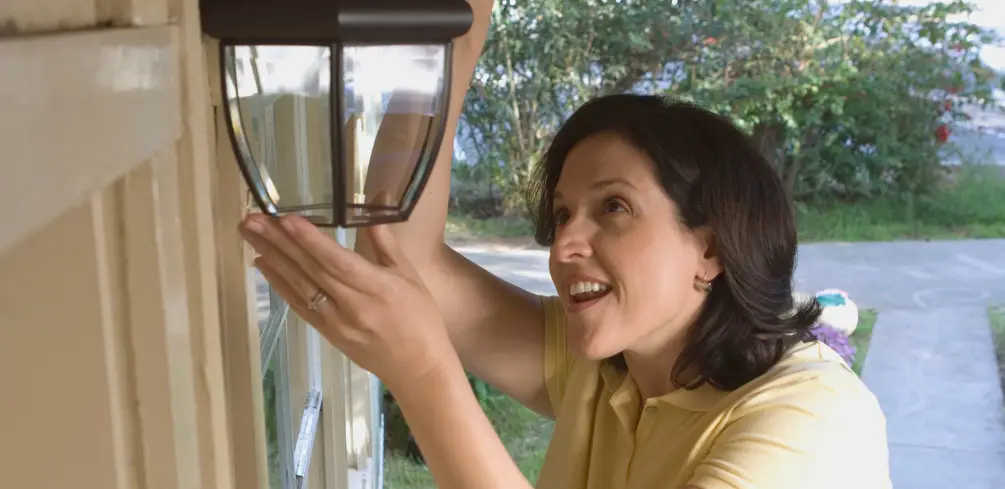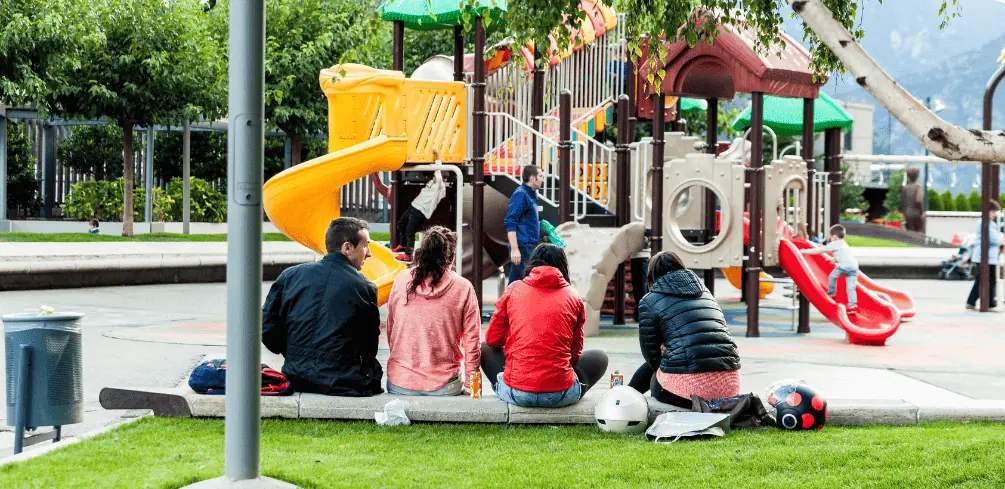Imagine your backyard as a blank canvas, waiting for the touch of light to transform it into a masterpiece. As an artist uses different shades and hues, so too should you use different levels of luminosity to bring out the best features of your outdoor space.
The concept of lumens – the unit that measures the amount of visible light emitted by a source – is an essential aspect of this transformation process. Just as we wouldn’t paint without understanding colors, we shouldn’t illuminate without comprehending lumens.
Now, let’s consider why outdoor lighting is important and how much luminescence can make your backyard both functional and aesthetically pleasing after sundown. It’s not just about casting away shadows or making sure you don’t trip over something unseen; it goes beyond mere visibility.
Outdoor lighting can create ambiance, highlight architectural features, provide security, and even extend living spaces after dusk. To strike the perfect balance between utility and beauty requires careful calculations on required luminosity along with strategic choice and placement of lighting fixtures.
So let’s delve deeper into this illuminating subject matter together!
Understanding the Concept of Lumens

You’ve got to understand that lumens essentially measure the total amount of visible light from a source. It’s not about brightness alone but how much light is cast overall.
This definition brings us to an integral comparison: Lumens vs. Watts. Traditionally, we’ve gauged the brightness of a bulb using watts; however, this unit merely represents energy use rather than actual light output.
Therefore, if you’re looking for efficiency and optimal lighting conditions, focusing on lumens is a smarter choice. For instance, an LED bulb can produce the same level of luminosity as an incandescent one while consuming significantly fewer watts.
Now let’s delve deeper into how lumens relate to your environment. It goes beyond just illuminating your backyard — it impacts your carbon footprint too.
When you opt for high-lumen bulbs with lower energy consumption (like LEDs), you contribute less greenhouse gas emissions due to decreased electricity demand.
Plus, these types of bulbs typically last longer, which means less waste in our landfills over time. Thus, understanding and choosing lighting based on lumens can play a part in more sustainable living.
Remember also when considering outdoor lighting needs like those for your backyard, it’s crucial to strike a balance between adequate illumination and potential light pollution issues.
Too many lumens can create excessive brightness leading to skyglow (an undesirable brightening of the night sky), glare, or even unnecessary disturbance to wildlife habitats nearby.
So while determining how many lumens are necessary to effectively illuminate your backyard space without causing environmental harm may require some technical knowledge and thoughtful decision-making.
Importance of Outdoor Lighting

Outdoor illumination isn’t just the icing on the cake. It’s a crucial component that transforms your external space into a night-time paradise.
The importance of outdoor lighting extends beyond merely highlighting the beauty of your garden or patio setup after sundown. It serves as an essential tool for enhancing both the aesthetic appeal and safety measures in backyard spaces.
With adequate lumens, you can create a warm and inviting atmosphere while ensuring high visibility to prevent tripping hazards and other potential accidents.
The role of lumens in outdoor lighting can be summarized through three key points:
- Safety enhancement: A well-lit exterior deters unwanted visitors and increases security by eliminating dark corners where intruders could hide.
- Aesthetic appeal: Strategic placement of lights accentuates landscaping features and architectural details and adds depth to outdoor spaces during nighttime.
- Functionality: Adequate brightness makes recreational activities possible even after sunset, extending the usability hours of your backyard.
The right balance between lumens and design brings out the full potential of your outdoor area. Your choice in lighting fixtures should factor not only into their luminescence but also into how they contribute to the overall yard aesthetics.
However, avoid over-lighting as this can lead to light pollution or an overly bright space that loses its cozy feel.
Remember that different areas within your backyard might require different levels of brightness; for instance, paths may need less light compared to dining or seating areas.
By understanding these nuances about lumen usage in outdoor settings, you equip yourself with the knowledge that elevates both functionality and charm in your alfresco living spaces.
Calculating the Required Luminosity

Determining the right amount of brightness for your alfresco settings can be a bit tricky, but it’s essential to create that perfect balance between charm and practicality. To start with, you need to understand lumen measurement techniques.
Lumens are units used to measure the amount of visible light emitted by a source. For outdoor lighting, this is key in determining how bright or dim you want your lights to be.
Factors such as the size of your backyard, the purpose for which you require the light (e.g., safety, ambiance), and the types of fixtures you’re using will all impact this calculation.
Next, consider energy efficiency considerations. It’s not just about getting enough light; it’s also about ensuring that your lighting solution is sustainable and cost-effective.
LED lights are an excellent choice due to their longevity and power-saving features. They offer high lumen output at a fraction of the wattage compared with traditional incandescent bulbs – making them ideal for outdoor use where lighting may be needed for extended periods.
Plus, they come in various color temperatures, so you can choose whether you prefer warm or cool illumination according to your preference.
It’s worth noting that there isn’t exactly a one-size-fits-all answer when it comes down to how many lumens are required for backyard illumination – it largely depends on personal preference and specific needs.
However, as a general guide: paths usually need around 100 lumens; smaller decorative lamps or landscape lights often range between 50-300 lumens; floodlights typically require 700-1300 lumens per fixture; while larger areas like driveways may need upwards of 1500 lumens each.
This guideline can provide an initial estimate but remember that achieving optimal lighting conditions might call for some experimentation with different light placements and intensities.
Choosing the Right Lighting Fixtures

Choosing the right fixtures for your alfresco lighting can feel like picking out a wedding dress – so many styles, so much pressure, and you’re just hoping you don’t end up with something that’ll make your guests question your taste.
Considering the lighting aesthetics is crucial to creating an inviting outdoor space that suits both your personal style and the architectural design of your home.
The first step is to ascertain what kind of mood you want to set in your yard:
do you prefer an intimate atmosphere with dimmer lights or a brighter setting ideal for energetic parties?
Once decided, it’s time to explore different types of light fixtures, such as path lights, wall lights, string lights, or deck lights, each designed to serve specific roles.
Understanding how each type of fixture disperses light is key to making energy-efficient choices. For instance, downlights are great for illuminating larger areas with fewer units, while task-oriented fixtures like spotlights should be used sparingly due to their high-intensity beams.
LEDs are highly recommended for their superior energy efficiency and longer lifespan compared to traditional bulbs. They provide ample lumens without consuming too much power – a perfect blend for backyard lighting.
When selecting these fixtures, remember that harmony between function and aesthetic appeal is paramount.
Consider materials that complement your home’s exterior finish or elements in the landscape – bronze finishes often work well with rustic settings while sleek steel might be more suitable if you have a modern minimalist design.
Also, think about incorporating motion sensor features; they offer enhanced security and convenience by automatically illuminating when movement is detected.
And while deciding on all this might seem daunting at first glance, bear in mind that it’s not about achieving perfection but rather finding what works best for you and brings joy every time dusk sets in your lovely outdoor haven.
Effective Placement of Lights

Imagine walking through your garden at twilight, the shadows dancing in rhythm with the rustling leaves, as strategically placed fixtures bathe your space in a soft, inviting glow.
To achieve this picturesque scene, you need to understand and master the art of effective light placement.
It doesn’t matter if you have a thousand lumens or ten thousand; without proper positioning and shadow manipulation, even the brightest lights can fail to highlight your backyard’s beauty effectively.
In creating an enchanting illumination design for your backyard, start by identifying which parts of your yard you want to accentuate. Perhaps it’s a majestic oak tree, a delicate rose bush, or an artistic sculpture.
Play around with shadows by placing lights at various angles and distances from these features. This technique can add depth and intrigue to your landscape.
Adjusting light angles is crucial for controlling where light falls and how it interacts with surfaces. Remember that downward lighting minimizes glare while upward lighting emphasizes height.
Just like in interior design, layered lighting can add warmth and richness to outdoor spaces too. Combine ambient lighting (for overall illumination) with task lighting (for specific areas like walkways) and accent lighting (to highlight features).
Experiment with different color temperatures to evoke different moods – warm white for a cozy ambiance or cool white for a crisp modern feel.
Remember that every outdoor space is unique; what works beautifully in one might not work as well in another. Don’t be afraid to experiment with various setups until you find one that complements your garden perfectly.
Consider factors such as natural moonlight, artificial streetlights nearby, and any existing outdoor lights when planning out your backyard illumination strategy.
Given enough time and thoughtfulness about how best to use lumens creatively via optimal light positioning and expert shadow manipulation techniques, you’re guaranteed to create an alluring atmosphere that enhances both the aesthetics and functionality of your yard area after dark.
Conclusion
In conclusion, it’s crucial to consider the lumens needed for outdoor lighting.
Remember, it’s not about having the brightest lights but rather creating an ambiance that suits your needs.
To paraphrase an old adage, ‘The right light in the right place makes all the difference.’
Consider factors like security, activities, and aesthetics when determining luminosity.
It may be a technical process, but pinpointing your exact lighting requirement is key to achieving a well-lit backyard.





